What Was An Aztec Confession?
A. Sutherland - AncientPages.com - The Aztec religion offered a formal confession in case of sin or some serious crimes. According to tradition, the Aztecs had the possibility to confess their sins.
Left: Huastec statue of Tlazoltéotl, Mexico, 900-1521, later assimilated to the Mexica pantheon. British museum - CC BY-SA 3.0; Right: Xochiquetzal, from the Codex Rios, 16th century. Pedro de los Rios (lived: 16th century) - The Codex Rios - Public Domain
Traditionally, according to Aztec laws, crimes were treated with severe treatments; however, there was a possibility to make a confession, which automatically provided the confessor with protection. Since people were only able to make one confession during their lifetime, usually this life event took place when people were very old or knew they were about to die.
The exact date for the confession had to be established by a priest, who consulted the tonalamatl, , the 260-day sacred calendar book and the ceremony of confession usually took place during the Festival of Ochpaniztli.
This festival was an important Aztec celebration, which honored the mother goddess and the maize goddess, and was conducted with the help of five priests dressed in paper ornaments and standing on the steps of a pyramid. These priests represented the four cardinal points and the center.
The confession could only take place in front of the goddess Tlazolteotl, one of the most important goddesses of the Aztec pantheon. She was the goddess of human fertility, sexuality, purification, steam bath, midwives, filth, and a patroness of adulterers.
Tlazolteotl played an significqant role in the confession of wrongdoing through her priests.
Another goddess who was authorized to accept the confession was Xochiquetzal, goddess associated with concepts of fertility, beauty, and female sexual power, serving as a protector of young mothers and a patron of pregnancy, childbirth.
The penitent had to confess its sins in the order he had committed them, then, he ceremonially burned incense using a copal tree, and performed an auto-sacrifice (or blood-letting) as ordered by a priest.
After confessing, the person – dressed only in a paper skirt decorated with designs related to goddess Tlazolteotl - had to fast, and then go at night to one of the shrines built for women who died during childbirth. He had to leave its skirt behind, at the shrine - a symbol that they had left behind their sins.
Without sins, he went home – naked in the dark. According to Aztec tradition, being naked in public was considered shameful, so this was a serious way to show guilt.
Written by – A. Sutherland - AncientPages.com Senior Staff Writer
Updated on February 11, 2024
Copyright © AncientPages.com All rights reserved. This material may not be published, broadcast, rewritten or redistributed in whole or part without the express written permission of AncientPages.com
Expand for referencesReferences:
Kroger J, Granziera P. Aztec Goddesses and Christian Madonnas
More From Ancient Pages
-
 “The Starving Of Saqqara Statue” And Its Undeciphered Inscription Could Pre-Date The Pyramids Of Egypt
Archaeology | Jun 2, 2014
“The Starving Of Saqqara Statue” And Its Undeciphered Inscription Could Pre-Date The Pyramids Of Egypt
Archaeology | Jun 2, 2014 -
 Controversial Story And Secret Knowledge Of Li Ching-Yuen Who Lived For 256 Years
Featured Stories | Sep 19, 2015
Controversial Story And Secret Knowledge Of Li Ching-Yuen Who Lived For 256 Years
Featured Stories | Sep 19, 2015 -
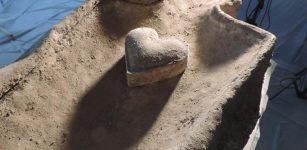 Remarkable discovery: Ancient coffins reveal centuries-old secrets of French nobility
News | Sep 1, 2015
Remarkable discovery: Ancient coffins reveal centuries-old secrets of French nobility
News | Sep 1, 2015 -
 ‘Cradle Of The Scythians’ Studied By Russian-Polish Archaeologists
Archaeology | Dec 20, 2015
‘Cradle Of The Scythians’ Studied By Russian-Polish Archaeologists
Archaeology | Dec 20, 2015 -
 Why Was Constantinople Called New Rome?
Ancient History Facts | Mar 9, 2020
Why Was Constantinople Called New Rome?
Ancient History Facts | Mar 9, 2020 -
 Did Queen Nitocris Build A Secret Underground Chamber To Commit Murder?
Featured Stories | Nov 12, 2020
Did Queen Nitocris Build A Secret Underground Chamber To Commit Murder?
Featured Stories | Nov 12, 2020 -
 Treasure Hunters Encounter Something Unexplained In The Arizona Mountains
Featured Stories | Apr 7, 2022
Treasure Hunters Encounter Something Unexplained In The Arizona Mountains
Featured Stories | Apr 7, 2022 -
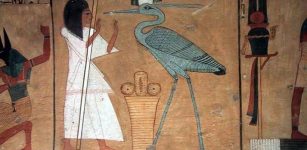 Mythical Egyptian Bennu Bird And Deity
Egyptian Mythology | Jun 5, 2016
Mythical Egyptian Bennu Bird And Deity
Egyptian Mythology | Jun 5, 2016 -
 Fascinating Medieval Knight Armor History
Featured Stories | Oct 23, 2018
Fascinating Medieval Knight Armor History
Featured Stories | Oct 23, 2018 -
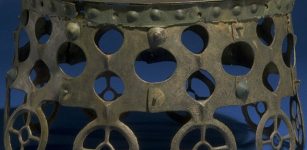 Mysterious Balkåkra Disc – Rare Strange Bronze Artifact Found In A Bog
Artifacts | Jul 25, 2019
Mysterious Balkåkra Disc – Rare Strange Bronze Artifact Found In A Bog
Artifacts | Jul 25, 2019 -
 Incredible Treasure Discovered In The Secret Chamber Of The Great Pyramid 1,200 Years Ago May Offer Proof Of Long-Lost Scientific Knowledge
Artifacts | Dec 31, 2018
Incredible Treasure Discovered In The Secret Chamber Of The Great Pyramid 1,200 Years Ago May Offer Proof Of Long-Lost Scientific Knowledge
Artifacts | Dec 31, 2018 -
 Scipio Africanus – Rome’s Greatest General Who Defeated Unbeatable Hannibal
Featured Stories | Aug 5, 2021
Scipio Africanus – Rome’s Greatest General Who Defeated Unbeatable Hannibal
Featured Stories | Aug 5, 2021 -
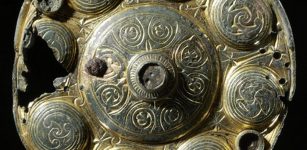 Viking’s Symbols Of Travels Prestige And Adventure Were Imported From Abroad
Ancient Symbols | Oct 1, 2015
Viking’s Symbols Of Travels Prestige And Adventure Were Imported From Abroad
Ancient Symbols | Oct 1, 2015 -
 Brokkr And Eitri – Norse Dwarves Who Fashioned Magical Artifacts For The Gods
Featured Stories | Aug 19, 2019
Brokkr And Eitri – Norse Dwarves Who Fashioned Magical Artifacts For The Gods
Featured Stories | Aug 19, 2019 -
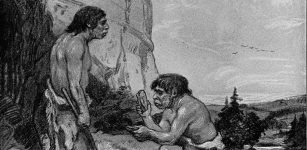 Unraveling The Mystery Of How Our Ancestors Created The First Spoken Words
Archaeology | Dec 6, 2021
Unraveling The Mystery Of How Our Ancestors Created The First Spoken Words
Archaeology | Dec 6, 2021 -
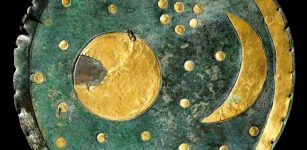 Nebra Disc – Artifact That Represents 3,600-Year-Old Astronomical Knowledge
Artifacts | May 26, 2014
Nebra Disc – Artifact That Represents 3,600-Year-Old Astronomical Knowledge
Artifacts | May 26, 2014 -
 South Korea’s Silla-Era Tombs Reveal More Priceless Jewelry
Archaeology | Sep 9, 2020
South Korea’s Silla-Era Tombs Reveal More Priceless Jewelry
Archaeology | Sep 9, 2020 -
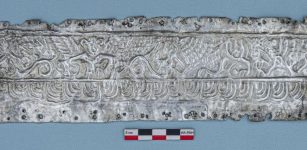 Unique Plate Of Winged Scythian Gods And Walking Griffons Discovered In Middle Don
Archaeology | Nov 19, 2021
Unique Plate Of Winged Scythian Gods And Walking Griffons Discovered In Middle Don
Archaeology | Nov 19, 2021 -
 Irminsul – Mysterious Sacred Symbol Of The Saxons – Is It Linked To Yggdrasil And God Odin?
Ancient Symbols | Feb 11, 2019
Irminsul – Mysterious Sacred Symbol Of The Saxons – Is It Linked To Yggdrasil And God Odin?
Ancient Symbols | Feb 11, 2019 -
 Hidden Text Of Medical Book By Doctor Galen Read For The First Time In 1000 Years
Archaeology | Mar 24, 2018
Hidden Text Of Medical Book By Doctor Galen Read For The First Time In 1000 Years
Archaeology | Mar 24, 2018

